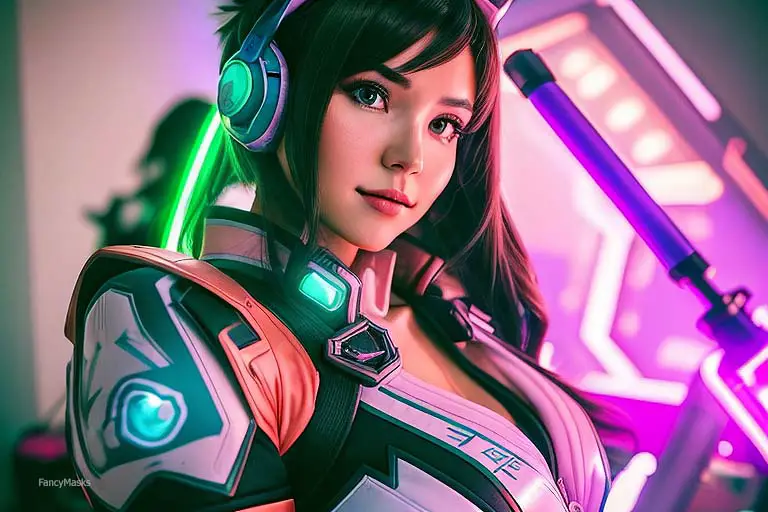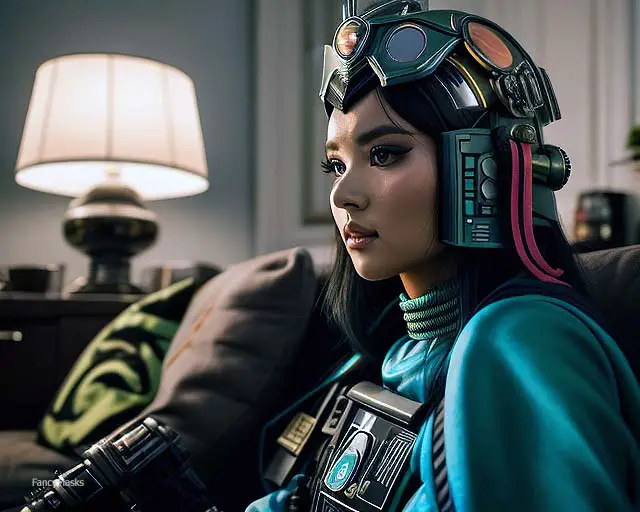When it comes to cosplay, choosing the right fabric is crucial. The fabric you choose can make or break the look of your costume. With so many different types of fabrics available, it can be challenging to know where to start.
When choosing a fabric for your cosplay it will come down to four main criteria: COST, AESTHETICS, SKILL LEVEL for MATERIAL, and Durability. Because of this, it can be a personal decision that will vary based on each person and each project.
In this article, we’ll discuss everything you need to know about choosing the perfect fabric for your cosplay costume.

Understanding Cosplay Fabric
Before we delve into the different types of fabric available for cosplay, it’s essential to understand what cosplay fabric is. Cosplay fabric is a type of fabric that is specifically used for making costumes for cosplay. These fabrics are usually chosen for their texture, color, weight, and overall aesthetic appearance. This guide will only cover cloth fabric, if you are looking for a guide to EVA foam is covered in a separate guide.
When choosing a cosplay fabric, it’s essential to consider the following factors:
1. Aesthetic Appearance
The aesthetic appearance of the fabric is perhaps the most critical factor to consider. Cosplay costumes are all about capturing the essence of a character, and the fabric plays a vital role in achieving this. Consider the color, texture, and pattern of the fabric and how it matches the character you are portraying.
When selecting your cosplay fabric, consider the specific scene from the character you are portraying. Analyze details such as the type of material their outfit is made from and the amount of detail needed for an accurate look. For example, if the character has detailed stitching or embroidery, then that may require a different type of fabric than a more basic design.
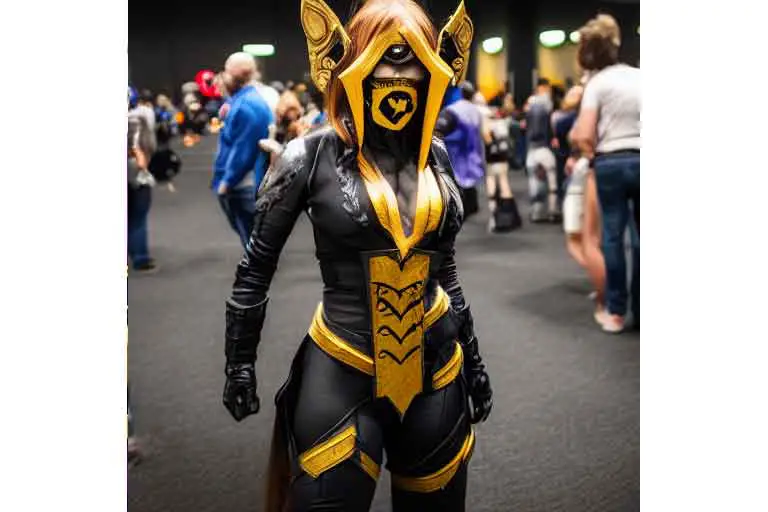
2. Comfort
Comfort is another crucial factor when choosing a cosplay fabric. Cosplay costumes can be heavy and require hours of wear, so choosing a comfortable fabric is essential. Consider the weight and breathability of the fabric, as well as any special care requirements.
Breathability is something that people new to outfit creation often overlook. One tip we heard from a professional costume maker was to fake the layers. If you are wearing a formal mens suit, you don’t need a shirt underneath the coat. Just a dickie in the center and you can use velcro to fasten some sleeves that will poke out the edge of the cuff.
More lightweight fabrics will both breath better and are less weight making them cooler if you are going to do a lot of walking around.
3. Durability
Durability is a crucial factor, especially if you plan to wear your cosplay costume multiple times. A durable fabric can withstand the wear and tear of conventions, photoshoots, and performances. Consider the weight and thickness of the fabric and whether it can withstand frequent washing and use.
I see people err on the side of making their costumes too durable. There’s a difference between being well-stiched with proper fasteners and doing double lining. Most of the time, we recommend not lining most of the things you create unless it gets to be a comfort issue. We cover this topic in great deal in our guide comparing halloween costumes to cosplay outfits.
4. Texture
The texture of the fabric can also play a significant role in the overall look of your costume. Some characters require a specific texture, such as rough or smooth, to achieve their signature look. Consider the texture of the fabric and how it will affect the appearance of your costume.
The fabric texture is a highly important consideration. When you first start cotton is a good budget fabric that will work for a lot of projects. It’s something that can be washed, and we like starting with this. That being said, cotton doesn’t offer the most texture options.
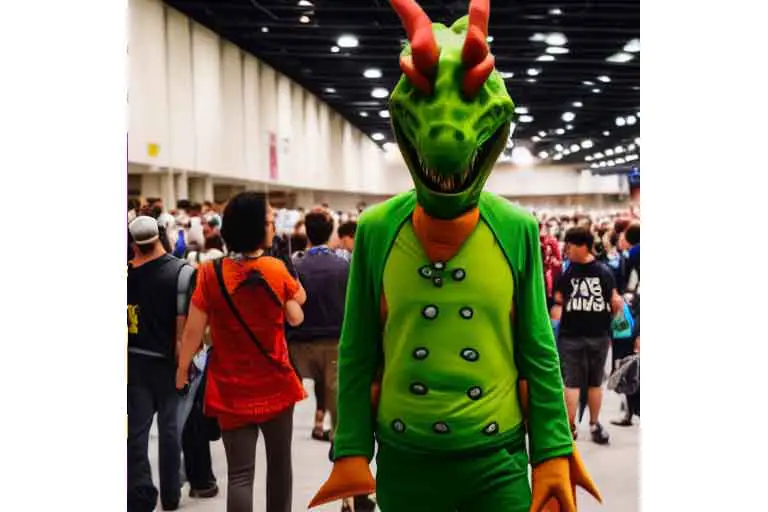
5. Cost
Price is an important consideration when choosing a cosplay fabric. Some fabrics can be expensive, so it’s essential to choose a fabric that fits within your budget. Keep in mind that the cost of the fabric can vary depending on the quality and availability of the fabric.
A lot of people will be best served to start with an inexpensive fabric to make their first iteration, and then choose a better version for their second one. When I was starting, our family would go to the local sewing shop, and I was given $10 to buy the ends from the clearance table. These were normally very ugly patterns that just didn’t sell or smaller bits that were leftover when someone had bought most of the fabric on the bolt.
These were ideal for a young maker to practice as I messed up far more than I ever got right. It also taught me to be creative. My first outfit was a ninja outfit that I pieced together out of a lot of dark fabric ends.
Types of Cosplay Fabric
Now that we understand what cosplay fabric is and the factors to consider when choosing a fabric let’s take a closer look at some of the most commonly used types of cosplay fabric.
1. Cotton
Cotton is a soft, breathable fabric that is commonly used for cosplay costumes that require a natural, organic look. It’s an excellent choice for costumes that will be worn for extended periods, as it is gentle on the skin and does not cause irritation. Cotton is also relatively inexpensive, making it a popular choice for budget-conscious cosplayers.
Cotton is an incredibly versatile fabric that can be used for a wide range of cosplay costumes. It can be easily dyed or bleached to achieve a variety of colors and hues, making it ideal for characters with multiple looks. Cotton is also the perfect fabric choice for costumes that need to stretch or move with your body, such as jumpsuits and body suits.
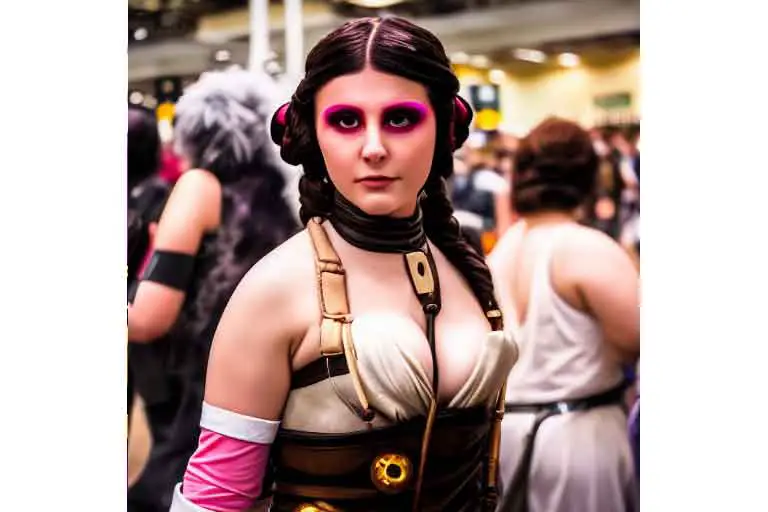
2. Polyester
Polyester is a durable, lightweight fabric that is ideal for costumes that need to withstand wear and tear. It’s commonly used for making armor and other heavy costumes. Polyester is also water-resistant, making it an excellent choice for costumes that will be worn outdoors or in wet conditions.
Polyester is an ideal fabric choice for costumes that require a lot of durability and strength. It’s also great for creating armor pieces and other heavy parts of the costume, as it can easily hold its shape while still being lightweight. It is also water-resistant, which makes it perfect for costumes that will be exposed to wet conditions or worn outdoors. This material is easy to dye or bleach to achieve various colors and hues, making it suitable for characters with multiple looks. Furthermore, polyester has excellent stretchability and flexibility which allows the costume to move with your body when you’re wearing it – perfect for jumpsuits and other body suits!
3. Satin
Satin is a shiny, smooth fabric that is ideal for making costumes that require a sleek, elegant look. It’s commonly used for making dresses and other formal wear. Satin is a delicate fabric that requires special care, so it may not be the best choice for costumes that will be worn frequently.
Satin is an excellent choice for costumes that require a luxurious, elegant look. It has a glossy sheen and smooth texture which makes it perfect for gowns, dresses, and other formal wear. Satin also drapes beautifully, making it great for creating flowing garments such as capes or cloaks.
However, satin is a delicate fabric that requires special care so it might not be the best option if you are looking to make costumes that will be worn frequently or need to endure heavy wear and tear. Satin can also be expensive compared to other fabrics, so budget-conscious cosplayers should keep this in mind when selecting their materials. Additionally, because of its thinness and lightweight properties, satin may not provide enough structure or support on its own; thus it’s often used as an accent fabric layered over another more durable material like cotton or polyester.
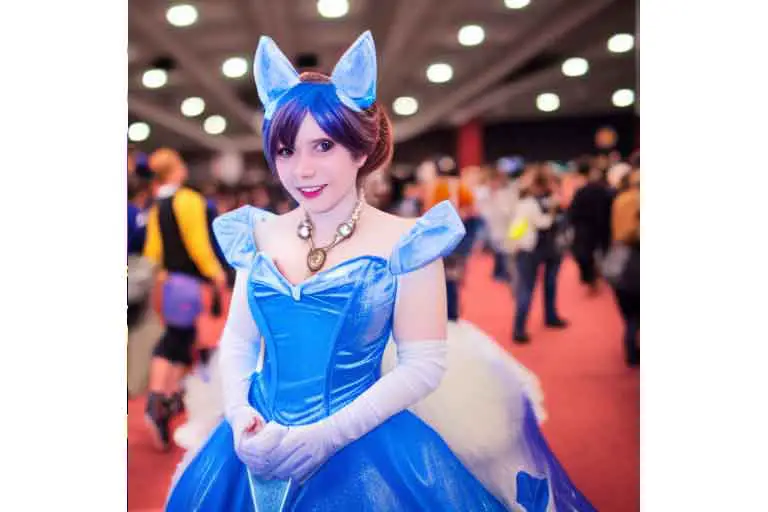
4. Silk
Silk is a luxurious, lightweight fabric that is ideal for making costumes that require a delicate and flowing look. It’s commonly used for making capes and other accessories. Silk is a delicate fabric that requires special care, so it may not be the best choice for costumes that will be worn frequently. Silk can be quite expensive, but it’s worth it for the luxurious look it provides.
It’s often used for making capes, robes, and other accessories as it drapes well and creates a flowing look. Silk is also a delicate fabric that requires special care so it may not be the best choice if you are looking to make costumes that will be worn frequently or need to endure heavy wear and tear. This type of fabric is also perfect for making intricate details like ruffles or frills on dresses or gowns due to its soft texture and thinness which allows it to easily hold its shape when manipulated. Because of its delicate nature, silk should usually be layered over another more durable material like cotton or polyester for the costume piece to have enough structure and support while still maintaining its elegant look.
5. Leather
Leather is a durable, tough fabric that is ideal for making costumes that require a rugged, rough look. It’s commonly used for making jackets, vests, and boots. Leather is an excellent choice for costumes that will be worn frequently, as it can withstand wear and tear and still look great. It’s more expensive than many other cosplay fabrics, and it’s difficult to work with. For this reason, we recommend that most people stay away from leather for cosplay outfits.
Leather is a great choice for cosplay costumes that require a rugged and tough look. It’s perfect for making jackets, vests, boots, and other heavy-duty pieces of clothing. Leather is an excellent choice for costumes that will be worn frequently as it can withstand wear and tear without losing its shape or color.
Leather usually requires special care – such as conditioning with oils or waxes to prevent cracking which can add additional time and effort to the costume construction process. Additionally, since leather comes from animal hide it may not always be available in the exact shades you need; thus you might have to work around certain limitations when creating your desired look with this material. Despite these drawbacks though, leather remains one of the most popular choices among experienced customers due to its durability and ability to create unique looks that are sure to stand out at any event!

6. Faux Fur
Faux fur is a synthetic fabric that is perfect for creating the appearance of animal fur. It’s commonly used for making costumes that require a furry texture, such as werewolves or other animal-based characters. Faux fur is usually inexpensive, making it an excellent choice for budget-conscious cosplayers.
Faux fur can be dyed to achieve any color, and it can also be cut or trimmed to achieve a variety of looks. Faux fur is a great choice for creating a realistic furry look without the expense and ethical issues associated with using real animal fur.
It’s soft, lightweight, and comes in a variety of colors which makes it perfect for crafting costumes that require an eye-catching, unique look. Faux fur can be used to make clothing pieces such as jackets or vests as well as accessories like hats or boot covers. Additionally, it is often less expensive than other types of fabrics due to its synthetic nature; thus it’s an ideal option for budget-conscious cosplayers looking to save money while still achieving their desired costume design. This material also requires minimal care; simply brushing out any tangles and storing away from direct sunlight should keep your fabric looking good as new!
7. Spandex
Spandex is a stretchy, form-fitting fabric that is ideal for making costumes that require a snug fit. It’s commonly used for making bodysuits and other skin-tight costumes. Spandex can be quite affordable, but higher-quality spandex can be expensive.
Spandex is a great choice for creating body-hugging costumes that need to move with you. It’s lightweight and stretchy, allowing it to fit snugly against the body without restricting movement or feeling uncomfortable. Plus, spandex comes in many colors and patterns so you can easily find one that matches your costume design.
The fabric is also quite affordable compared to other materials like leather; however, higher-quality spandex can be more expensive which may be necessary depending on the complexity of the costume piece being created. Additionally, since this material is form-fitting it requires precise measurements before cutting as any mistakes could cause an ill-fitting garment or accessory. Spandex is very unforgiving when it comes to cutting and sewing and we rank it on the more difficult side when it comes to the skill level required for suing.
You should always be careful when washing spandex as improper techniques may damage its elasticity and cause fading over time – thus handwashing or using a gentle cycle are usually best for maintaining its quality!
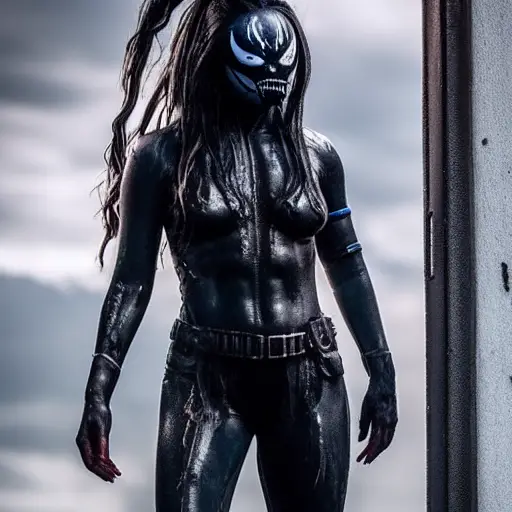
Tips for Choosing the Right Fabric
Here are some additional tips to help you choose the right fabric for your cosplay costume:
1. Research
Research is essential when choosing a cosplay fabric. Look at reference images of the character you are portraying and determine the type of fabric used in their outfit. Consider the texture, color, and weight of the fabric and how it will contribute to the overall look of your costume.
2. Sample Swatches
When in doubt, order a sample swatch of the fabric you’re considering. This can give you a better idea of the color, texture, and weight of the fabric and help you make an informed decision.
3. Try Before You Buy
If possible, try on the fabric before you purchase it. This can help you determine whether it’s comfortable to wear and fits the way you want it to.
4. Mix and Match
Don’t be afraid to mix and match fabrics to achieve the look you want. For example, you could use cotton for the base of your costume and add leather accents to create a more rugged look.
5. Care and Maintenance
Consider the care and maintenance required for the fabric you choose. Some fabrics require special care, such as dry cleaning or hand washing. Make sure you’re willing to invest the time and effort required to maintain the appearance of your costume.
Conclusion
Choosing the right fabric for your cosplay costume is crucial. Consider the aesthetic appearance, comfort, durability, texture, and cost when choosing a fabric. With the right fabric and a little bit of creativity, you can create a stunning cosplay costume that will turn heads at your next convention.
No matter what your skill level is, choosing the right fabric for your cosplay costume is essential to achieving the desired look. It’s important to consider not only how it will contribute to the aesthetics of the costume but also its comfort, durability, texture, and cost. With a little bit of research and creativity, you can find just the right material that will make your costume look stunning while still being comfortable and affordable.


